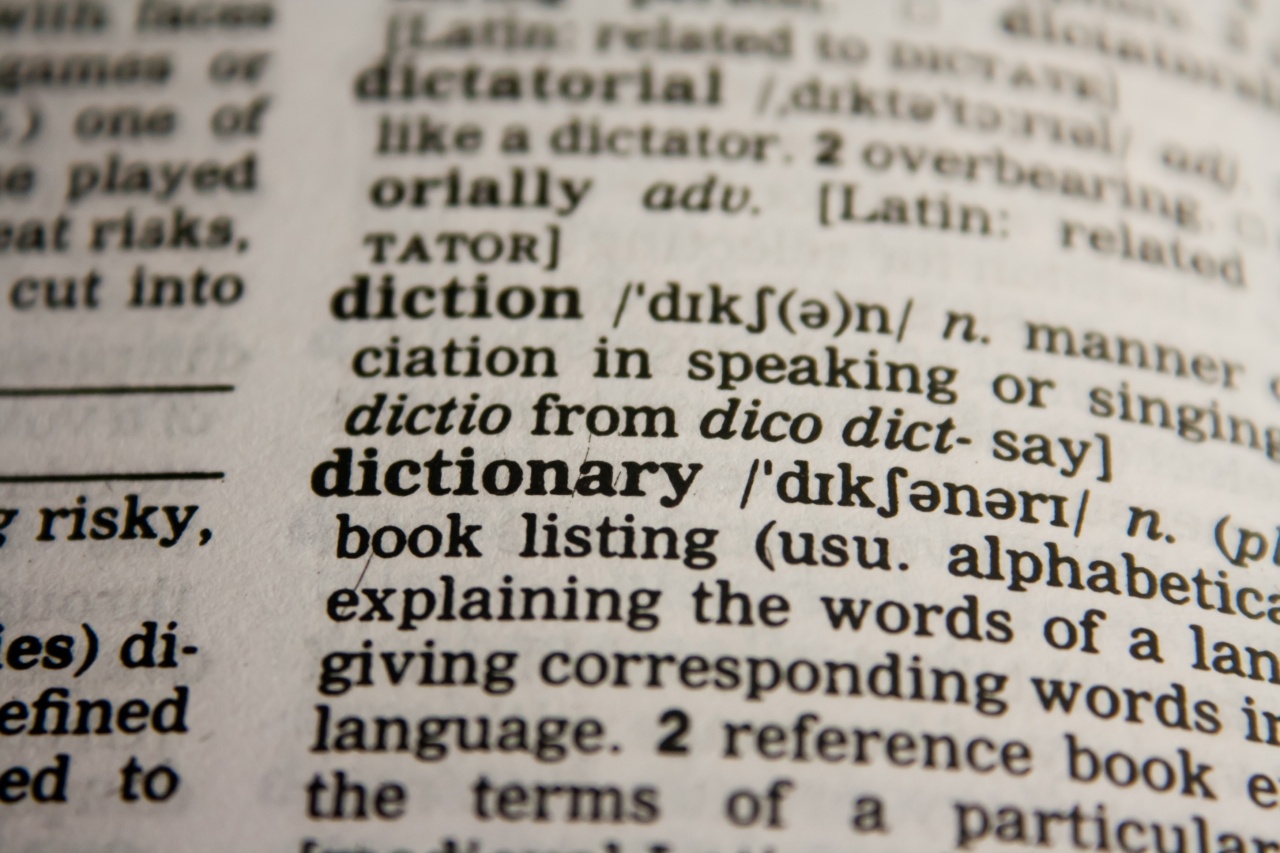Language plays a critical role in our communication and understanding of the world. It shapes our thoughts, perceptions, and interactions with others. However, language is not neutral and can be influenced by various sociocultural factors.
One such factor is the concept of “white” language, which refers to the dominance of certain linguistic patterns and structures associated with white, Western cultures. In this article, we will explore what is meant by “white” language and how to interpret it.
Understanding “White” Language
“White” language is a term used to describe the linguistic norms and conventions that are deemed standard or prestigious in many white-dominated societies.
It encompasses grammatical rules, vocabulary, pronunciation, and even non-verbal cues that are characteristic of dominant white cultures. This concept often marginalizes and creates disparities for individuals and communities whose speech patterns differ from these norms.
The idea of “white” language is deeply rooted in historical and social contexts. During colonialism and the subsequent globalization, European colonial powers imposed their languages and cultural practices on colonized nations.
This linguistic imperialism continues to shape the dominance of white language in many parts of the world today.
“White” language tends to prioritize specific communication styles associated with power, authority, and academic success. It places value on maintaining perceived standards of correctness, clarity, and formality.
This can lead to the exclusion of other languages and dialects that do not fit these norms, perpetuating linguistic discrimination and inequalities.
Interpreting “White” Language
Interpreting “white” language requires a critical awareness and understanding of the sociopolitical dynamics at play. Here are some key aspects to consider:.
1. Historical and Cultural Contexts
To interpret “white” language, it is crucial to recognize its historical and cultural origins.
Understanding how language has been shaped by colonialism, imperialism, and power dynamics empowers us to challenge linguistic biases and promote inclusivity in communication.
2. Linguistic Diversity
Recognize and embrace linguistic diversity. Languages and dialects that deviate from “white” language norms are not inferior or incorrect; they are simply different.
Valuing and respecting diverse language patterns fosters inclusivity and cultural understanding.
3. Power Dynamics
Examine power dynamics associated with language use. Acknowledge that the dominance of “white” language is intertwined with social and economic hierarchies.
By critically evaluating language choices and promoting alternative perspectives, we can challenge existing power structures.
4. Language as a Tool
View language as a tool for empowerment, rather than a marker of superiority or inferiority.
Encourage individuals and communities to express their thoughts and ideas in ways that resonate with their cultural backgrounds, while also equipping them with the skills needed to navigate dominant linguistic spaces.
5. Education and Awareness
Advocate for inclusive language practices in educational settings.
By incorporating linguistic diversity into curricula and promoting awareness of different language patterns, we can create more equitable learning environments and challenge the dominance of “white” language.
6. Listening and Amplifying Voices
Listen actively to marginalized voices and amplify their linguistic perspectives.
Centering these voices in conversations and providing platforms for their linguistic practices can help challenge the hegemony of “white” language and foster greater linguistic inclusivity.
7. Language Policies and Regulations
Advocate for language policies and regulations that recognize and protect linguistic diversity.
Push for inclusive language practices in institutions such as media, government, and workplaces to dismantle linguistic biases and create more equitable spaces.
8. Intersectionality
Consider the intersections of language, race, ethnicity, gender, and other social identities.
Recognize that language discrimination intersects with other forms of oppression, and challenge the ways in which these intersecting identities are marginalized or excluded within dominant linguistic frameworks.
9. Challenging Linguistic Prejudices
Challenge linguistic prejudices and biases against non-“white” languages and dialects.
Promote critical discussions that question prevailing language norms and ensure that language is not used as a tool for perpetuating discrimination or inequality.
10. Embracing Change and Growth
Embrace change and growth in language use and interpretation. Language is not static; it evolves and adapts to reflect the needs and aspirations of its speakers.
By embracing linguistic evolution, we can create more inclusive and harmonious linguistic landscapes.
Conclusion
“White” language refers to the linguistic norms and patterns associated with white, Western cultures that have been historically dominant.
Interpreting “white” language requires critical awareness of the sociohistorical contexts, power dynamics, and biases embedded within it. It is essential to challenge linguistic discrimination, embrace linguistic diversity, and advocate for inclusive language practices. Only then can we create a more equitable and inclusive linguistic landscape.






























